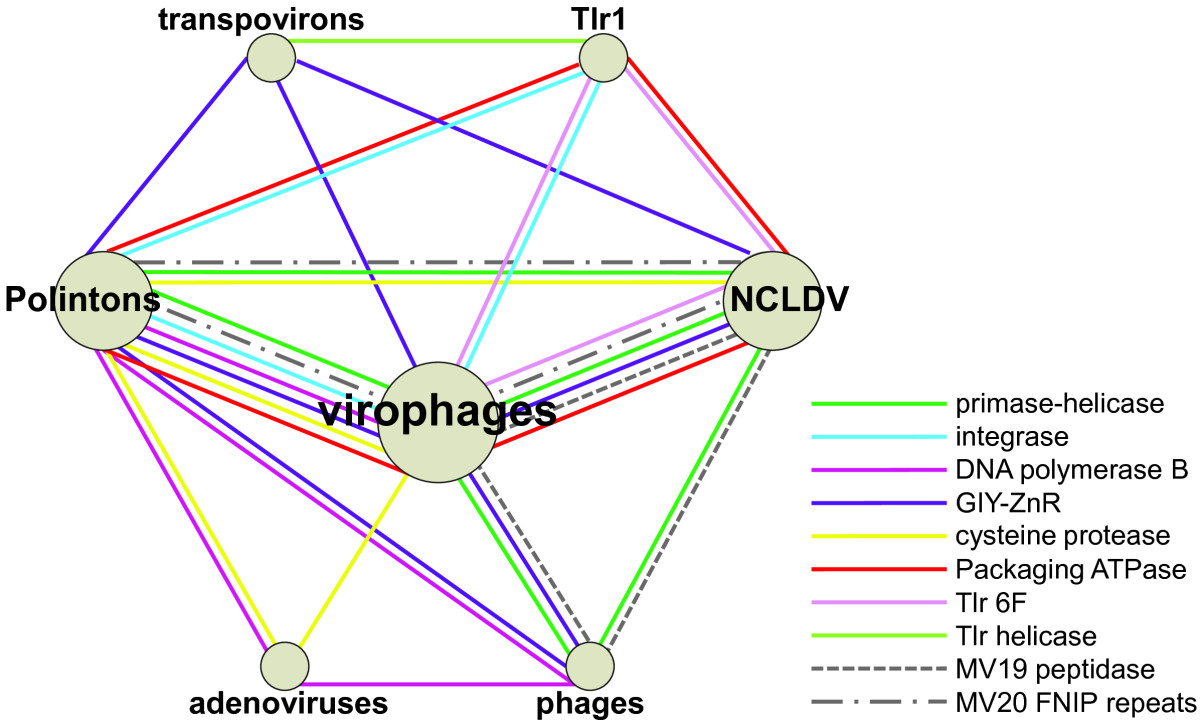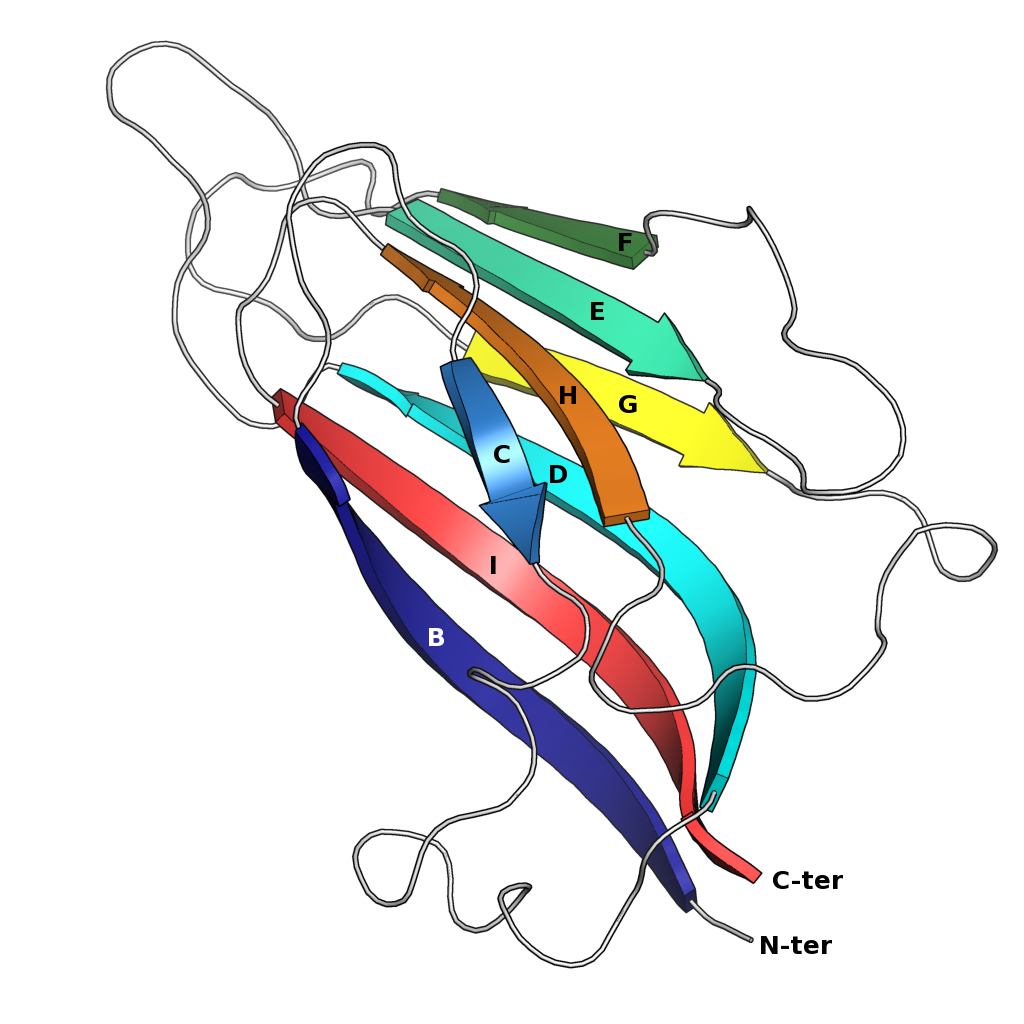|
Virophages
Virophages are small, double-stranded DNA viral phages that require the Coinfection, co-infection of another virus. The co-infecting viruses are typically giant viruses. Virophages rely on the viral replication factory of the co-infecting giant virus for their own replication. One of the characteristics of virophages is that they have a Parasitism, parasitic relationship with the co-infecting virus. Their dependence upon the giant virus for replication often results in the deactivation of the giant viruses. The virophage may improve the recovery and survival of the host organism. Virophages constitute the Class (biology), class ''Virophaviricetes''. Discovery The first virophage was discovered in a cooling tower in Paris in 2008. It was discovered with its co-infecting giant virus, ''Acanthamoeba castellanii'' mamavirus (ACMV). The virophage was named Sputnik virophage, Sputnik and its replication relied entirely on the co-infection of ACMV and its cytoplasmic replication mac ... [...More Info...] [...Related Items...] OR: [Wikipedia] [Google] [Baidu] |
Zamilon Virophage
Zamilon virophage, or Zamilon, is a virophage, a group of small DNA viruses that infect protists and require a helper virus to replicate; they are a type of satellite virus. Discovered in 2013 in Tunisia, infecting '' Acanthamoeba polyphaga'' amoebae, Zamilon most closely resembles Sputnik, the first virophage to be discovered. The name is Arabic for "the neighbour". Its spherical particle is 50–60 nm in diameter, and contains a circular double-stranded DNA genome of around 17 kb, which is predicted to encode 20 polypeptides. A related strain, Zamilon 2, has been identified in North America. All known virophages are associated with helpers in the giant DNA virus family ''Mimiviridae''. Zamilon is restricted in its range of helper viruses; it can be supported by viruses from ''Mimivirus''-like ''Mimiviridae'' lineages B and C, but not from lineage A. This appears to be a consequence of a rudimentary immune system of the helper virus, termed MIMIVIRE (mimivirus viroph ... [...More Info...] [...Related Items...] OR: [Wikipedia] [Google] [Baidu] |
Sputnik Virophage
Sputnik virophage (from Russian "satellite") is a subviral agent that reproduces in amoeba cells that are already infected by a certain helper virus; Sputnik uses the helper virus's machinery for reproduction and inhibits replication of the helper virus. It is known as a virophage, in analogy to the term ''bacteriophage''. Viruses like Sputnik that depend on co-infection of the host cell by helper viruses are known as satellite viruses. At its discovery in a Paris water-cooling tower in 2008, Sputnik was the first known satellite virus that inhibited replication of its helper virus and thus acted as a parasite of that virus. In analogy, it was called a '' virophage''. Sputnik virophages were found infecting giant viruses of '' Mimiviridae'' group A. However, they are able to grow in amoebae infected by ''Mimiviridae'' of any of the groups A, B, and C. Virology Sputnik was first isolated in 2008 from a sample obtained from humans; it was harvested from the contact lens ... [...More Info...] [...Related Items...] OR: [Wikipedia] [Google] [Baidu] |
Mavirus
''Mavirus'' is a genus of double stranded DNA virus that can infect the marine phagotrophic flagellate '' Cafeteria roenbergensis'', but only in the presence of the giant '' CroV'' virus (''Cafeteria roenbergensis''). The genus contains only one species: ''Mavirus cafeteriae''. ''Mavirus'' can integrate into the genome of cells of ''C. roenbergensis'', and thereby confer immunity to the population The name is derived from Maverick virus. The virophage was discovered by Matthias G. Fischer of the University of British Columbia while he was working on Cafeteria roenbergensis virus as part of his PhD. __TOC__ Virology The genome is 19,063 bases long and encodes 20 predicted coding sequences. Seven have homology to the Maverick/ Polinton family of transposons. The genome encodes a retroviral integrase, an adenosine triphosphatase (ATPase), a cysteine protease and a protein primed DNA polymerase A DNA polymerase is a member of a family of enzymes that catalyze the synthesi ... [...More Info...] [...Related Items...] OR: [Wikipedia] [Google] [Baidu] |
Mavirus Virophage
''Mavirus'' is a genus of double stranded DNA virus that can infect the marine phagotrophic flagellate ''Cafeteria roenbergensis'', but only in the presence of the giant ''CroV'' virus (''Cafeteria roenbergensis''). The genus contains only one species: ''Mavirus cafeteriae''. ''Mavirus'' can integrate into the genome of cells of ''C. roenbergensis'', and thereby confer immunity to the population The name is derived from Maverick virus. The virophage was discovered by Matthias G. Fischer of the University of British Columbia while he was working on Cafeteria roenbergensis virus as part of his PhD. __TOC__ Virology The genome is 19,063 bases long and encodes 20 predicted coding sequences. Seven have homology to the Maverick/Polinton family of transposons. The genome encodes a retroviral integrase, an adenosine triphosphatase (ATPase), a cysteine protease and a protein primed DNA polymerase A DNA polymerase is a member of a family of enzymes that catalyze the synthesis of ... [...More Info...] [...Related Items...] OR: [Wikipedia] [Google] [Baidu] |
Bamfordvirae
''Bamfordvirae'' is a kingdom of viruses. This kingdom is recognized for its use of double jelly roll major capsid proteins. It was formerly known as the PRD1-adenovirus lineage. The kingdom is named after Dennis H. Bamford who first promoted the evolutionary unity of all viruses encoding double jelly-roll major capsid proteins. Taxonomy ''Bamfordvirae'' contains the following phyla: *''Nucleocytoviricota ''Nucleocytoviricota'' is a phylum of viruses. Members of the phylum are also known as the nucleocytoplasmic large DNA viruses (NCLDV), which serves as the basis of the name of the phylum with the suffix - for virus phylum. These viruses are refe ...'' *'' Preplasmiviricota'' References Virus kingdoms {{Virus-stub ... [...More Info...] [...Related Items...] OR: [Wikipedia] [Google] [Baidu] |
Sputnikvirus
Sputnik virophage (from Russian "satellite") is a subviral agent that reproduces in amoeba cells that are already infected by a certain helper virus; Sputnik uses the helper virus's machinery for reproduction and inhibits replication of the helper virus. It is known as a virophage, in analogy to the term ''bacteriophage''. Viruses like Sputnik that depend on co-infection of the host cell by helper viruses are known as satellite viruses. At its discovery in a Paris water-cooling tower in 2008, Sputnik was the first known satellite virus that inhibited replication of its helper virus and thus acted as a parasite of that virus. In analogy, it was called a ''virophage''. Sputnik virophages were found infecting giant viruses of ''Mimiviridae'' group A. However, they are able to grow in amoebae infected by ''Mimiviridae'' of any of the groups A, B, and C. Virology Sputnik was first isolated in 2008 from a sample obtained from humans; it was harvested from the contact lens fluid o ... [...More Info...] [...Related Items...] OR: [Wikipedia] [Google] [Baidu] |
Priklausovirales
''Priklausovirales'' is an order of virus A virus is a submicroscopic infectious agent that replicates only inside the living Cell (biology), cells of an organism. Viruses infect all life forms, from animals and plants to microorganisms, including bacteria and archaea. Viruses are ...es. Taxonomy The order contains four families that are monotypic down to the rank of species, i.e. each family contains only one species: * Family: ''Burtonviroviridae'' ** Genus: ''Burquivirus'' *** Species: ''Burquivirus flavolapense'' * Family: ''Dishuiviroviridae'' ** Genus: ''Essdubovirus'' *** Species: ''Essdubovirus chlorellae'' * Family: ''Gulliviroviridae'' ** Genus: ''Invirovirus'' *** Species: ''Invirovirus crochense'' * Family: ''Omnilimnoviroviridae'' ** Genus: ''Panaquavirovirus'' *** Species: ''Panaquavirovirus qinghaense'' References Virus orders Virophages {{Virus-stub ... [...More Info...] [...Related Items...] OR: [Wikipedia] [Google] [Baidu] |
Adenoviridae
Adenoviruses (members of the family (biology), family ''Adenoviridae'') are medium-sized (90–100 nanometer, nm), nonenveloped (without an outer lipid bilayer) viruses with an icosahedral nucleocapsid containing a double-stranded DNA genome. Their name derives from their initial isolation from human adenoids in 1953. They have a broad range of vertebrate hosts; in humans, more than 50 distinct adenoviral serotypes have been found to cause a wide range of Adenovirus infection, illnesses, from mild respiratory infections in young children (the common cold) to life-threatening multi-organ disease in people with a Immunodeficiency, weakened immune system. Virology Classification This family contains the following genus, genera: * ''Aviadenovirus'' * ''Barthadenovirus'' * ''Ichtadenovirus'' * ''Mastadenovirus'' (including all human adenoviruses) * ''Siadenovirus'' * ''Testadenovirus'' Diversity In humans, currently there are 88 human adenoviruses (HAdVs) in seven species (H ... [...More Info...] [...Related Items...] OR: [Wikipedia] [Google] [Baidu] |
Jelly Roll Fold
The jelly roll or Swiss roll fold is a protein fold or supersecondary structure composed of eight beta strands arranged in two four-stranded sheets. The name of the structure was introduced by Jane S. Richardson in 1981, reflecting its resemblance to the jelly or Swiss roll cake. The fold is an elaboration on the Greek key (protein structure), Greek key motif and is sometimes considered a form of beta barrel. It is very common in viral proteins, particularly viral capsid proteins. Taken together, the jelly roll and Greek key structures comprise around 30% of the all-beta proteins annotated in the Structural Classification of Proteins (SCOP) database. Structure The basic jelly roll structure consists of eight beta strands arranged in two four-stranded antiparallel (biochemistry), antiparallel beta sheets which pack together across a hydrophobic interface [Where citation... uniprot]. The strands are traditionally labeled B through I for the historical reason that the first solved s ... [...More Info...] [...Related Items...] OR: [Wikipedia] [Google] [Baidu] |
Loki's Castle
Loki's Castle is a field of five active hydrothermal vents in the Atlantic, mid-Atlantic Ocean, located at 73rd parallel north, 73 degrees north on the Mid-Atlantic Ridge between Iceland and Svalbard at a depth of . When they were discovered in mid-July 2008, they were the most northerly black smoker vents known to science. They are of geological interest as they occur in a relatively stable region of the Earth's crust with diminished tectonic forces and consequently fewer hydrothermal vents. They are the site where a biologically distinct class of archaea, the Lokiarchaeota, were discovered. Geography Loki's Castle is located on the Gakkel Ridge (previously the Arctic Mid-Ocean Ridge), where the Mohns and Knipovich ridges converge. Oceanic core complex, Ocean core complexes are found to the northwest. The field resides approximately deep at the boundary of the Greenland Sea, Greenland and Norwegian Sea. History Discovery The vents were discovered in 2008 by a 25-person mult ... [...More Info...] [...Related Items...] OR: [Wikipedia] [Google] [Baidu] |




